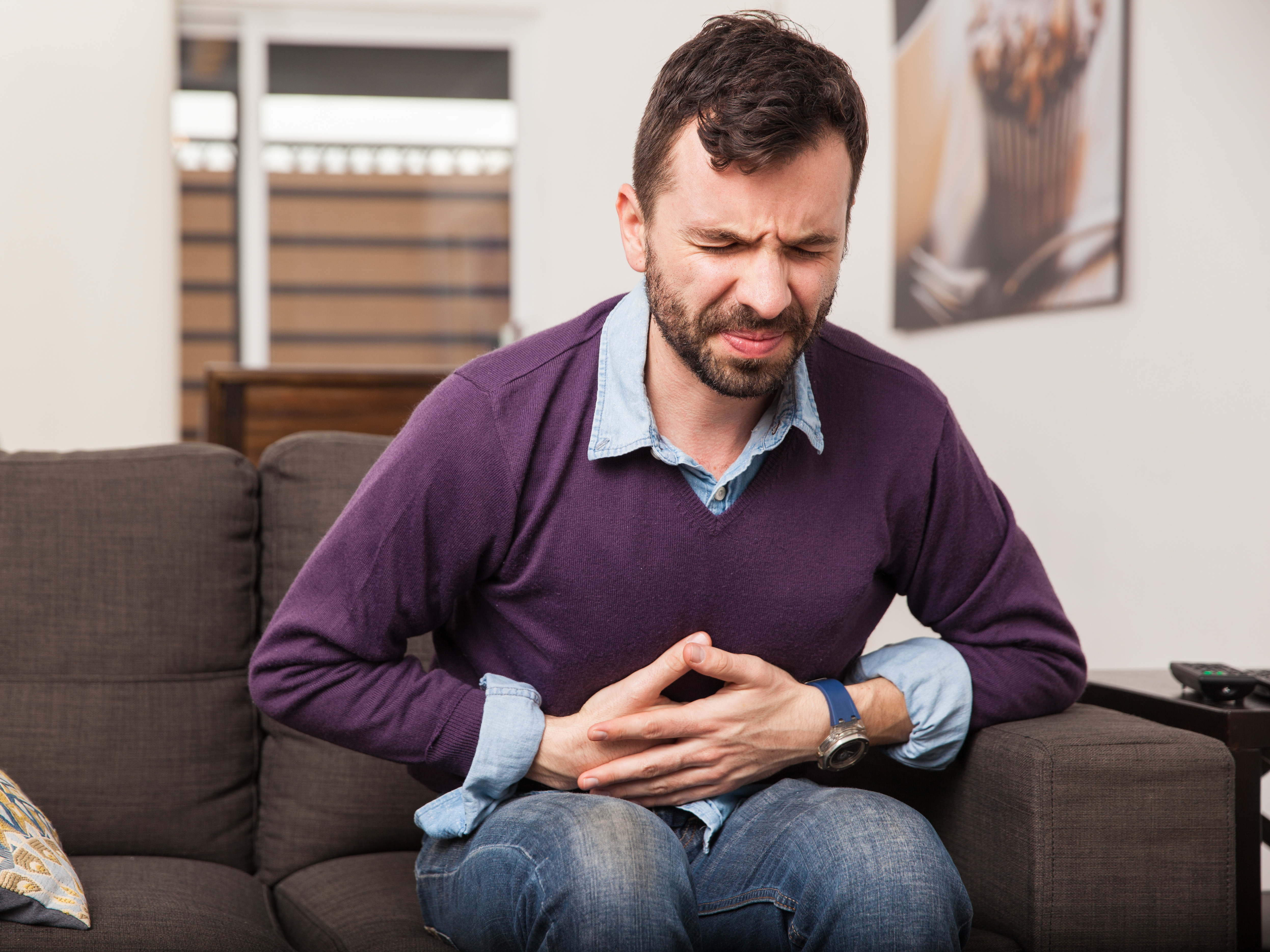Get Easy Health Digest™ in your inbox and don’t miss a thing when you subscribe today. Plus, get the free bonus report, Mother Nature’s Tips, Tricks and Remedies for Cholesterol, Blood Pressure & Blood Sugar as my way of saying welcome to the community!
12 times you should pay attention to stomach pain

Pain unnerves us. Obviously it hurts — a little or a lot. And we want to know why.
Some types of pain frighten us, like chest pain. Other types are more common and we tend to put off looking into their causes, at least until we are very uncomfortable. Abdominal pain often falls into that latter category.
There are several organs and conditions that can cause abdominal pain, from the acutely dangerous appendicitis, to the subtle condition of dysbiosis and leaking gut. So how can you identify the source of your stomach pain?
Abdominal organs
I like to categorize abdominal pain according to the location of the organs inside. Pretend you are looking right into the abdomen. You’ll see the following organs located like this:
- Right upper: liver, gall bladder and colon
- Middle upper: lower esophagus, stomach and pancreas
- Left upper: spleen and colon
- Right lower: appendix, ovary, ureter and colon
- Middle lower: urinary bladder and uterus
- Left lower: ovary, ureter and colon
Diseases causing abdominal pain
Now consider the common, rather urgent, conditions of these organs. I’ll save a discussion about the intestinal tract pain for the end of this article.
- Liver: viral hepatitis A, B or C and advanced alcoholic liver disease can cause right upper abdominal pain along with nausea, lack of appetite and often fever.
- Gall bladder: gall stones stuck in the cystic duct (cholelithiasis) cause inflammation of the gallbladder (cholecystitis) with right upper abdominal pain and nausea. Ascending cholangitis is much more rear, which will cause fever and is a medical emergency.
- Lower esophagus: acid reflux, Barrett’s esophagus, and achalasia (spasm of the lower esophagus) all cause heartburn symptoms in the middle upper abdomen similar to gastritis or stomach ulcers.
- Stomach: gastritis, stomach ulcer, and dyspepsia cause a constant middle upper abdomen pain often with nausea, lasting several minutes to hours and can mimic a heart attack. It will largely resolve if you drink a tablespoon of Maalox or Mylanta (over the counter) and it is even more effective if mixed with a tablespoon of viscous lidocaine (prescription).
- Pancreas: pancreatitis pain feels like esophageal or stomach acid pain of the middle upper abdomen, but worse. It nearly always comes with nausea, vomiting, and fever, leading to serious dehydration.
- Spleen: an enlarged spleen may cause left upper abdominal pain that is worse when you take in a deep breath.
- Appendix: appendicitis causes right lower abdominal pain eventually, but often begins in the middle or even left abdomen. This pain is constant or may be in waves (coinciding with peristalsis, the rhythmic movement of the intestinal tract), along with nausea and often fevers. Pain will usually increase steadily and if it is not diagnosed (CT scan) and treated (appendectomy) urgently, it can quite often rupture, which is a life-threatening true medical emergency.
- Ovary: ovarian cyst pain is also a constant aching like appendicitis and does not come in waves with peristalsis. Nausea is much less common. Right or left lower abdominal pain comes on slower and is treated with pain reliever until it naturally resolves or ruptures.
- Ureter: a stone in either the right or left ureter (ureterolithiasis) will cause flank or lower abdominal pain on the affected side. This pain comes on rather quickly and is described as deep aching or sharp pain lasting until the stone passes (minutes to days).
- Bladder: urinary tract infection almost always causes urinary pain or urgency of the urethra. This often is associated with bladder pain (cystitis), which is located in the middle lower abdomen.
- Uterus: infection of the female uterus (endometritis), painful overgrowth of estrogen-sensitive tissue (endometriosis), or any pregnancy-related problem can cause middle lower abdominal pain. This pain comes on slowly, is deep and constant, and may come with a fever. No urinary pain is expected with this.
Intestinal pain
The small and large intestines can cause urgent pains in almost any location of your abdomen. Left lower abdominal cramping pain that comes in waves, associated with fever and diarrhea fits with diverticulitis, treated effectively with two antibiotics.
Localized pain with nausea can be a segment of stuck intestine (a.k.a. ileus) due to constipation or gas, treated effectively with high dose MiraLAX®. It contains Polyethylene Glycol 3350 which draws fluid into your intestinal lumen to soften your stool, relieve constipation and unblock your system most naturally. This same ingredient is contained in Golytely and Nulytely, used effectively for bowel cleansing prior to colonoscopy. 1
Rare but seriously emergent conditions include bowel that gets kinked into a knot (volvulus), folded inside out (intussusception), obstructed, severely dilated (toxic megacolon) or perforated (unless there is known Crohn’s disease).
Finally, there are some intestinal diseases which often don’t cause urgent pain, yet are critical to many other aspects of your health. You can click here to read more about them.
To feeling good for health,
Michael Cutler, M.D
Easy Health Options













